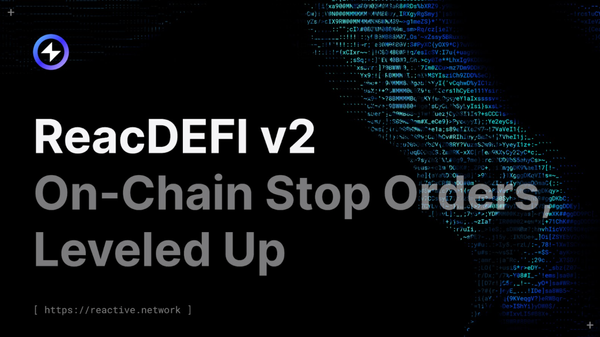Web3 Scams: Common Tactics

Ethereum and EVM-compatible chains like Binance Smart Chain, Polygon, Avalanche C-Chain, etc., are fertile grounds for innovation but also for scams due to their open nature and ease of deploying smart contracts.
If you’ve set up a wallet and explored a few crypto projects, you’re officially in the game. But so are scammers — and they love newcomers. In Web3, there are no banks or fraud departments to protect you. You’re in control of your assets, but that also means you're the only one responsible for their security.
Let us explore the most common scam types, how they trick people, and how to spot them before it’s too late.
Token-Related Scams
Honeypots
Scammers deploy tokens that appear legitimate, often copying the name, logo, or symbol of well-known projects. These tokens may even appear in your wallet without any action on your part. In some cases, you can buy them — but you either can’t sell, or you’re hit with extreme fees when attempting to do so.
This is often referred to as a “honeypot”: a token that appears fully functional but is deliberately designed to trap assets. The smart contract may allow users to buy freely while silently blocking any attempt to sell. These restrictions are often subtle and easy to overlook, especially for less experienced users.
A typical example might look like this:
function _transfer(address from, address to, uint256 amount) internal override {
// Prevent selling by blocking transfers *from* the liquidity pool
require(from != uniswapPair, "Selling is disabled");
super._transfer(from, to, amount);
}Rugpulls
A “rugpull” refers to a scam in which developers launch a token or protocol, promote it aggressively, attract users and liquidity, then suddenly withdraw all funds and abandon the project. This type of scam is common in DeFi projects, NFT collections, and staking platforms.
In many cases, the scam is made possible by code that allows the developers to drain liquidity or seize user funds. These functions are often disguised, hidden in obscure parts of the contract, or left in under the pretense of "maintenance" access. For example, this function allows the contract owner to withdraw all ETH held by the contract, pulling the rug on users who have deposited funds:
function emergencyWithdraw() public {
require(msg.sender == owner, "Not authorized");
payable(owner).transfer(address(this).balance);
}Dusting Attacks
You may receive a token airdropped into your wallet without asking for it. These tokens often link to websites claiming you’ve won a prize or are eligible for a reward. Interacting with these tokens or visiting their associated websites can lead to phishing attacks or malicious smart contract interactions.
This is known as a "dusting attack" — a tactic used to lure users into making unsafe transactions. In some cases, even viewing or attempting to transfer the token can invoke dangerous contract logic:
function transfer(address to, uint256 amount) public override returns (bool) {
// Triggers malicious behavior when someone tries to move the token
if (msg.sender != owner) {
// Could call external phishing logic, steal approvals, or just revert
drainWallet(msg.sender);
}
return super.transfer(to, amount);
}This kind of trap can be hidden behind seemingly harmless tokens. The `drainWallet()` function is illustrative — in reality, it might be a `delegatecall`, approval trick, or setup for a phishing site to finish the job.
DApp and Smart Contract Scams
Fake DApps and Approval Traps
Scammers build deceptive decentralized applications (DApps) that appear to offer useful features such as staking, swapping, or minting NFTs. When you connect your wallet and approve a transaction, you may unknowingly grant the DApp permission to transfer any amount of tokens from your account without further confirmation.
This is often done using standard `approve()` and `transferFrom()` functions from ERC-20 contracts. Once approved, the malicious contract can drain your tokens at will:
// User thinks they're staking tokens...
token.approve(address(this), type(uint256).max);
// Later, the contract drains all tokens using transferFrom
token.transferFrom(msg.sender, attackerAddress, token.balanceOf(msg.sender));
The approval call uses `type(uint256).max`, which is common for gas-saving convenience but abused here to gain total control. `transferFrom()` is triggered by the scammer later, often silently.
Malicious NFT Contracts
Fraudulent NFT projects often pressure users into minting quickly — with claims like “Only 100 mints left!” or “Whitelist ending soon!” But when you attempt to mint, the transaction you sign may do more than just mint an NFT. It can grant the scammer full access to your entire NFT collection.
This is typically done by calling the ERC-721 `setApprovalForAll()` function, allowing the scammer to transfer any of your NFTs without further permission:
// User thinks they're minting an NFT
nftContract.setApprovalForAll(attackerAddress, true);
// Later, the attacker drains all NFTs
nftContract.transferFrom(user, attackerAddress, tokenId);
Since `setApprovalForAll()` grants blanket permission to transfer all tokens in a collection, a single careless signature can lead to total loss. Scammers often hide this approval inside minting transactions, and combine it with FOMO tactics to pressure users into signing without fully understanding what they're authorizing.
Ponzi Schemes and Referral Traps
Some platforms promise unrealistic passive income or high daily returns, often under the guise of a decentralized smart contract. To earn more, you're encouraged to refer others, creating a system that appears sustainable but is, in reality, a “Ponzi scheme” – payouts to early users come directly from the deposits of new ones.
A simplified version of the logic might look like this:
mapping(address => uint256) public balances;
address[] public users;
function deposit() external payable {
users.push(msg.sender);
balances[msg.sender] += msg.value;
// Pay out a portion of new deposits to earlier users
uint256 reward = msg.value / 2;
address earlierUser = users[users.length - 2];
payable(earlierUser).transfer(reward);
}This kind of contract creates the illusion of profit, but it relies entirely on new participants to fund payouts. Once deposits slow down, the scheme collapses and most users are left with nothing.
Social Engineering
Not all scams rely on malicious code or fake smart contracts — many rely on manipulating people directly. This is known as social engineering: the use of psychological tactics to trick you into handing over access, assets, or sensitive information.
Romance Scams
Scammers build fake emotional relationships — often through dating apps or messaging platforms — to gain the victim’s trust. Once a connection is established, they fabricate emergencies or “investment opportunities” and ask for crypto transfers.
Pig Butchering
An advanced variation of the romance scam, this is a long-term con where the scammer plays the role of a romantic or friendly advisor. They introduce victims to fake crypto investment platforms, showing fake profits to encourage large deposits. When the victim tries to withdraw, they're either blocked or asked to send more (e.g., for fees or taxes).
Giveaway Scams
These rely on urgency and deception rather than long-term trust. Victims are tricked into believing they can receive free crypto — typically from a celebrity, influencer, or platform — if they send a small amount first. These scams often appear on social media, fake livestreams, or impersonated accounts.
Recap
Scams on Ethereum and other EVM-compatible chains aren’t always complex or technical. In fact, the most dangerous ones often rely on simplicity and familiarity — fake websites, impersonated support staff, or urgent messages.
From wallet drainers disguised as airdrops to approval phishing buried in mint buttons, many attacks succeed because they exploit moments of trust, distraction, or urgency. The blockchain executes whatever you approve, and attackers are betting you won’t double-check the details.
Knowing the common tactics is the first step toward defense. When you can recognize the patterns — fake sense of urgency, too-good-to-be-true rewards, sneaky contract approvals — you’re far less likely to fall for them.
About Reactive Network
The Reactive Network, pioneered by PARSIQ, ushers in a new wave of blockchain innovation through its Reactive Smart Contracts (RSCs). These advanced contracts can autonomously execute based on specific on-chain events, eliminating the need for off-chain computation and heralding a seamless cross-chain ecosystem vital for Web3’s growth.
Central to this breakthrough is the Inversion of Control (IoC) framework, which redefines smart contracts and decentralized applications (DApps) by imbuing them with unparalleled autonomy, efficiency, and interactivity. By marrying RSCs with IoC, Reactive Network is setting the stage for a transformative blockchain era, characterized by enhanced interoperability and the robust, user-friendly foundation Web3 demands.
Website | Blog | Twitter | Telegram | Discord | Docs





